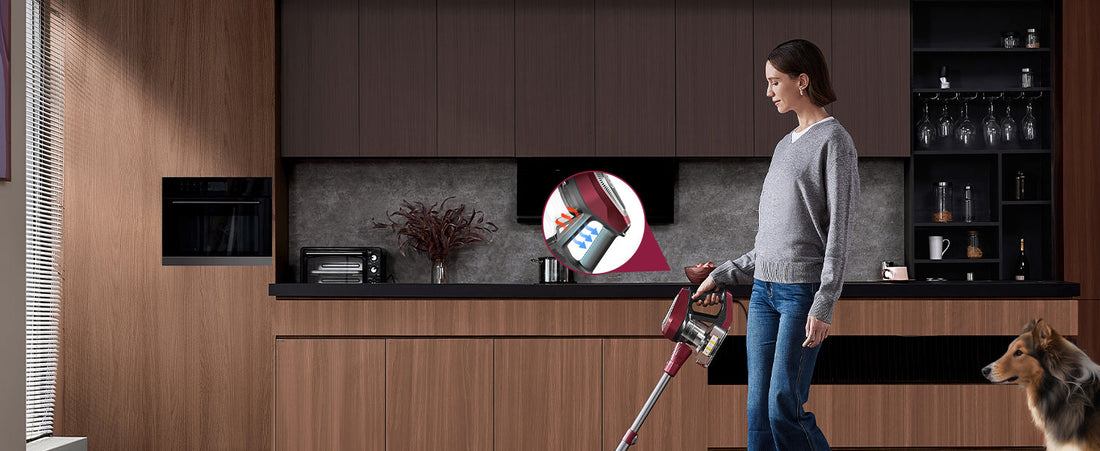It starts as a slight twinge in your wrist. Then a dull ache in your shoulder. By the time you finish vacuuming the living room, your lower back has joined the chorus of complaints. We've been taught to believe that cleaning is supposed to be a workout, but what if the problem isn't you—it's your vacuum?
The truth is, a well-designed vacuum shouldn't leave you feeling sore. The difference between a painful chore and a comfortable task often comes down to something most of us never think about: ergonomics. This is the science of designing tools to fit the human body, not force the body to contort to the tool. Let's unpack what truly makes a vacuum comfortable to use.
It's Not Just About Weight, It's About Balance
You might think the lightest vacuum is automatically the best. But a two-kilogram vacuum that's poorly balanced can feel heavier than a four-kilogram one that's perfectly weighted.
The secret lies in the center of gravity. Imagine carrying a heavy stack of books close to your chest versus holding them at arm's length. It's the same weight, but the effort is vastly different. The best vacuum designs place the heaviest components—like the motor—close to the handgrip and low to the ground. This creates a balanced feel where you guide the vacuum effortlessly, rather than fighting to keep its nose down. When the weight is properly distributed, the vacuum almost glides on its own, reducing strain on your wrists, arms, and back.
The Handle: Your Vacuum's Handshake
The point where you connect with your vacuum is the handle. This isn't just a piece of plastic; it's a critical interface. An ergonomic handle should feel like a comfortable handshake—secure, natural, and without pressure points.
Look for a handle with a soft-touch grip that prevents slipping, even if your palms get sweaty. The angle is also crucial. A slight, natural tilt can keep your wrist in a neutral position, preventing the awkward bending that leads to fatigue. You shouldn't have to clench your fist tightly; a gentle, confident hold should be all you need for full control.
The Little Details That Make a Big Difference
Ergonomics is found in the smallest of design choices. The placement of buttons, for instance. Can you easily turn the vacuum on and off or adjust the suction power without changing your grip? Buttons should fall naturally under your thumb.
Then there's the maneuverability. How well does the vacuum pivot around furniture legs? A head that swivels smoothly prevents you from having to jerk your body and strain your muscles with every turn. The cord is another factor. A long cord reduces how often you need to stop, bend over, and search for a new outlet—a simple feature that saves your back repeatedly.
At Vactidy, we believe that comfort is a feature as important as suction power. A vacuum can be incredibly powerful, but if it's uncomfortable to use, it will stay in the closet. Our design process starts with the human body, focusing on how a product feels during a 30-minute cleaning session, not just how it performs in a 30-second demo.
This user-centric philosophy is embodied in our Blitz C8 Cable Vacuum Cleaner (marketed as Vexilar C8 in certain international markets). While it delivers exceptional cleaning performance with 60 kPa suction power and a 600W motor for tackling pet hair, we paid equal attention to how it feels in your hand.
The Blitz C8 is engineered with a low center of gravity and balanced weight distribution to prevent arm fatigue. The handle is designed for a secure, neutral grip, and the V-shaped anti-tangle motorized brush glides smoothly from carpets to hard floors without needing excessive force. Features like the extra-long 7-meter power cord and 3-second automatic rewind are more than just conveniences; they are ergonomic benefits that minimize bending, stretching, and awkward movements.
Because we believe a clean home shouldn't come at the cost of your comfort.
Ready for a vacuum that works with you, not against you?

